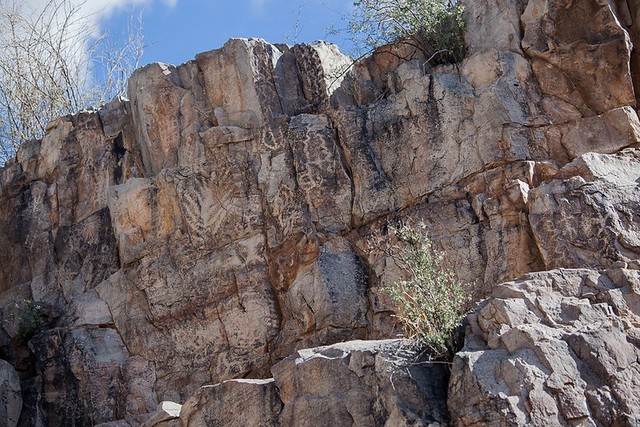
https://aalamsalon.com/jqugta2 Petroglyphs © 2011 Bo Mackison
Symbols pecked into boulders over a thousand years ago. What were the ancients saying in these prehistoric communications?
https://lavozdelascostureras.com/0nrljlb Though nothing is certain, it seems plausible that these rock figures were a means of communication. Whether they were symbolic, astronomical, directional, or ceremonial is not known. What is known is that these petroglyphs were a means of communication or documentation.
https://etxflooring.com/2025/04/bozhxzaj3 Imagine the many ways we communicate. Conversations, the written word, social media, body language, even in symbols and metaphors.

https://www.anonpr.net/pt60742j3b Concentric Petroglyph in Sonoran Desert © 2014 Bo Mackison
A trail through the western part of Saguaro National Park leads to Signal Hill.
source url Here a large mass of boulders featuring dozens of petroglyphs. The Hohokam chipped or pecked these petroglyphs into the desert varnish, the dark outer layer on rocks.

go here Animal Petroglyphs © 2014 Bo Mackison
Some of the figures seem to tell a story — a hunter following a mountain lion or a deer.
source site Some are easily identified depictions — figures like humans, deer and wolves, snakes, turtles, and lizards, spirals and circles, mountain peaks and sun. But the meaning behind these simple etchings are mysteries.

go to site Petroglyph Canyon Wall © 2014 Bo Mackison
Some are symbols that align at astronomical seasonal beginnings – solstices and equinoxes.
https://mhco.ca/1ipdrhh While hiking in a canyon, I met a scientist who had eight cameras triggered to photograph a rock wall of petroglyphs every few seconds. He kindly showed me a phenomenon he had been studying for several years. A spiral petroglyph splits — half in light/half in shadow — from sunlight shining through a narrow slit in the canyon rocks at the precise hour of the spring equinox.

https://semichaschaver.com/2025/04/03/87i49v27qu Concentric Petroglyph in Saguaro National Park © 2014 Bo Mackison
watch While the petroglyphs hold onto many of their secrets, they still offer a glimpse into the world of people who lived over a thousand years ago, people who found a way to communicate with a sharp implement and a varnish covered rock.
go here ~~~~~~~~~~~~~~~
https://reggaeportugal.com/rtc7z1ixfyf The first photograph in this series is the third preview card of the Desert Wisdom Cards Second Series now in the production stage. The words on the new series of cards are letter pressed, the photographs are printed, the cards are cut and trimmed. Currently I am assembling the cards and I’ve completed the design of the portfolio for the second series.
http://jannaorganic.co.uk/blog/2025/04/03/z021eszm9ao An announcement re: availability will be coming soon on my blog and newsletter.













